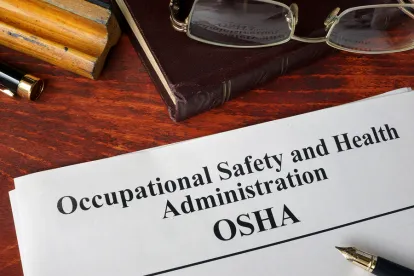On April, 12, 2021, the Occupational Safety and Health Administration (OSHA) published a Federal Register notice to extend the comment period of the notice of proposed rulemaking (NPRM) to amend the Hazard Communication Standard (HCS) by one month. The HCS is the federal-level legislation that sets forth the classification, labeling, Safety Data Sheet (SDS), and training requirements for hazardous chemicals intended to be used, handled, or stored in workplaces. The current HCS is based on the third revised edition (Rev 3) of the United Nations (UN) Globally Harmonized System of Classification and Labeling of Chemicals (GHS). The proposed changes include updating the HCS to align with the seventh revised edition (Rev 7) of GHS. The transition period proposed is one year for chemical manufacturers, importers, and distributors of substances and two years for chemical manufacturers, importers, and distributors of mixtures after the effective final rule is published. The notice was open for comments until April 19, 2021. OSHA states in the Federal Register that it will extend the comment period to May 19, 2021, and that it intends to schedule an informal public hearing.
Background
In 2012, the first update to the HCS since 1994 was published in the Federal Register. 77 Fed. Reg. 17574. The notice revised and amended the previous HCS substantially as it introduced the GHS concepts into the regulatory framework. At the time of publication, HCS 2012 was based on Rev 3 of GHS. The UN updates and revises the GHS model on a biannual basis, and at this time, the most current version is Rev 8. OSHA is proposing an update to align with Rev 7 and includes several other points of clarification and revision in the notice.
Overview of Proposed Amendments
Highlights of several major changes include the following:
- Revisions to align with Rev 7, with consideration of specific elements of Rev 8;
- Changes to labeling, including new label elements and accommodations to address small containers and bulk shipments;
- Revisions, clarifications, and additions to definitions;
- Updates to testing methods for various endpoints;
- Considerations for concentrations ranges for Trade Secrets;
- Proposed revisions to SDS content; and
- Proposal for scheduled updates to the HCS.
For a more detailed discussion on a few of the more significant changes, see our February 16, 2021, memorandum, “OSHA Proposes Amendments to the Hazard Communication Standard.”
Issues for Comment
OSHA included an “Issues and Options Considered” section that is intended to solicit stakeholder input on various regulatory issues and to allow for potential regulatory flexibility with respect to the content of the final rule. While OSHA invites stakeholders to comment on all aspects of the NPRM, this section identifies the specific areas of interest. The section includes certain issues and questions that are intended to assist stakeholders as they review the proposal and consider the comments they plan to submit. Details on these issues were previously provided in our February 16, 2021, memorandum.
Commentary
Apparently, several parties requested an extension to the comment period. OSHA in the Federal Register states that it “agrees to an extension and believes a 30-day extension of the public comment period is sufficient and appropriate.” Stakeholders should note that the content provided in responses to the NPRM are public and should provide OSHA with sufficient detail to allow thoughtful consideration to any proposed changes to the current language in the NPRM.
OSHA includes in the proposed update several items related to labeling. These items are currently addressed in various Letters of Interpretation. OSHA is amending the HCS to include these items and seeks comments from stakeholders on this approach. Chemical manufacturers, importers, and distributors should review the changes and prepare comments to OSHA on the applicability and utility of these changes in their operations. The changes to allow concentration ranges as an approach for addressing trade secrets and to include prescribed proposed ranges create better alignment with Canada and allow additional options to those wishing to disclose certain details, while allowing exact concentrations to remain protected. The use of concentration ranges and proposed ranges is a benefit interested parties should consider supporting in comments to OSHA.


 />i
/>i

